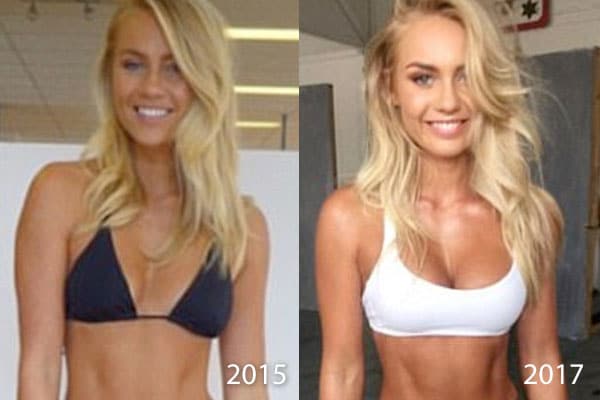They’re known for their natural beauty, but it’s no secret Bachelor contestants have turned to cosmetic surgeons in the past. It has been revealed that several women from the Bachelor Australia have invested in some ‘nip and tuck’ before the show.
Beverly Hills plastic surgeon Dr. Randal Haworth provided his thoughts on one of these contestants, Blair Thomas. Dr. Randal Haworth claimed it was quite obvious PE teacher Blair Thomas had undergone breast augmentation.
 ‘There is no disputing that Blair had her breasts enhanced, most likely with the help of a plastic surgeon. Her results make quite the statement and leave little to the imagination,’ Dr. Haworth observed. ‘The abrupt edge of her breasts as they transition from her chest wall indicate to me she had breast implants likely placed over her pectoralis major muscle,’ Dr. Haworth claimed.
‘There is no disputing that Blair had her breasts enhanced, most likely with the help of a plastic surgeon. Her results make quite the statement and leave little to the imagination,’ Dr. Haworth observed. ‘The abrupt edge of her breasts as they transition from her chest wall indicate to me she had breast implants likely placed over her pectoralis major muscle,’ Dr. Haworth claimed.
‘Implants placed over the muscle are more likely to give this “bolt-on” appearance not normally seen in nature. However, when a patient has little body fat or breast tissue, implants placed under the muscle can occasionally give the same appearance.’

 ‘Balance’ breasts are designed to ‘fly under the radar’, so to speak, leaving little evidence of surgical change. According to Dr. Haworth, ‘balance’ breasts are supposed to ‘look, feel and behave naturally’ and, as such, this is the surgery most likely chosen by Elyse. ‘It is obvious to me that Elyse had this balanced type of breast augmentation which is natural and well proportioned with the rest of her body,’ Haworth claimed. ‘This was likely achieved with cohesive silicone gel implants placed under her pectoralis major muscle.’
‘Balance’ breasts are designed to ‘fly under the radar’, so to speak, leaving little evidence of surgical change. According to Dr. Haworth, ‘balance’ breasts are supposed to ‘look, feel and behave naturally’ and, as such, this is the surgery most likely chosen by Elyse. ‘It is obvious to me that Elyse had this balanced type of breast augmentation which is natural and well proportioned with the rest of her body,’ Haworth claimed. ‘This was likely achieved with cohesive silicone gel implants placed under her pectoralis major muscle.’